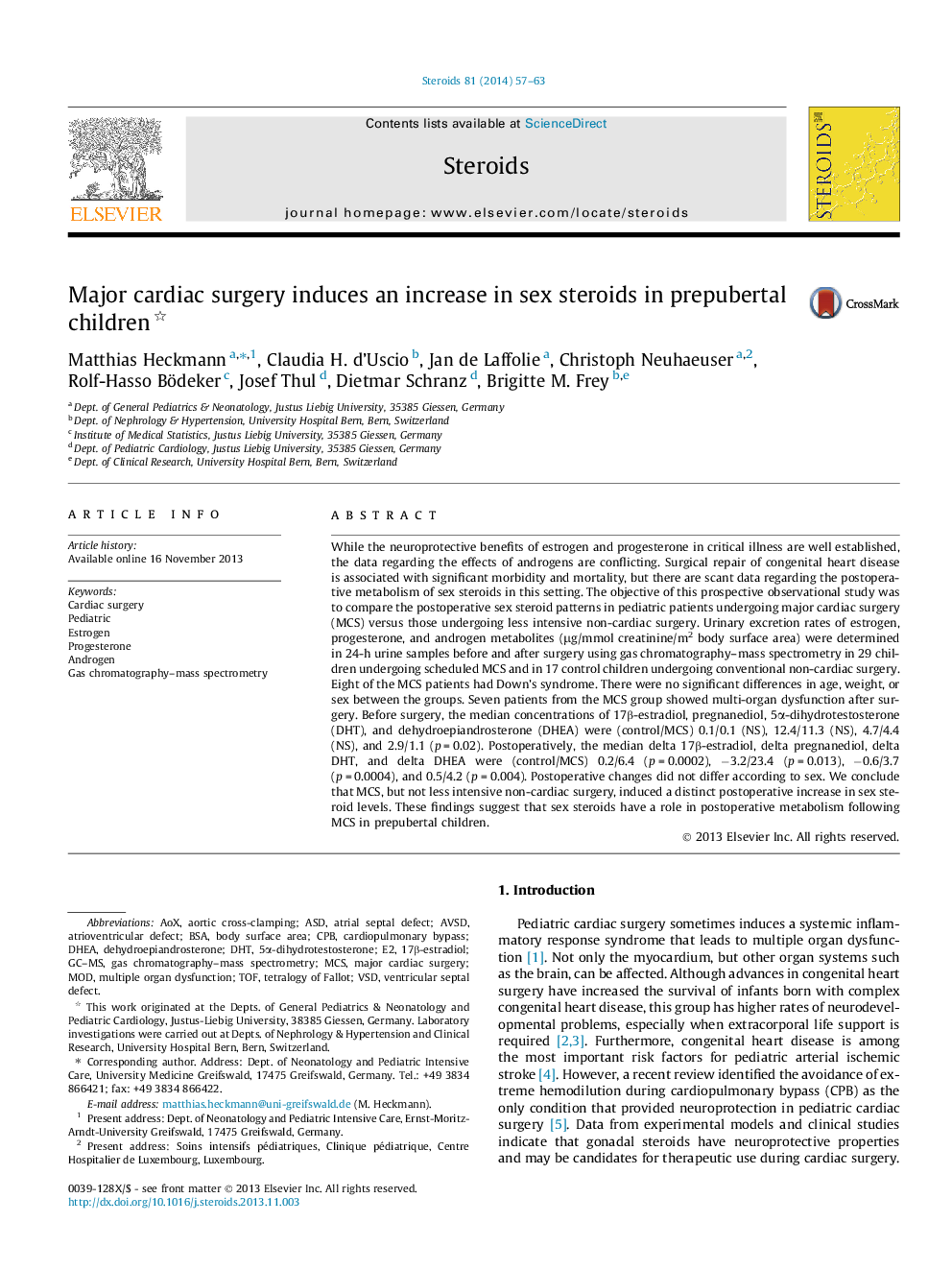| Article ID | Journal | Published Year | Pages | File Type |
|---|---|---|---|---|
| 2027842 | Steroids | 2014 | 7 Pages |
While the neuroprotective benefits of estrogen and progesterone in critical illness are well established, the data regarding the effects of androgens are conflicting. Surgical repair of congenital heart disease is associated with significant morbidity and mortality, but there are scant data regarding the postoperative metabolism of sex steroids in this setting. The objective of this prospective observational study was to compare the postoperative sex steroid patterns in pediatric patients undergoing major cardiac surgery (MCS) versus those undergoing less intensive non-cardiac surgery. Urinary excretion rates of estrogen, progesterone, and androgen metabolites (μg/mmol creatinine/m2 body surface area) were determined in 24-h urine samples before and after surgery using gas chromatography–mass spectrometry in 29 children undergoing scheduled MCS and in 17 control children undergoing conventional non-cardiac surgery. Eight of the MCS patients had Down’s syndrome. There were no significant differences in age, weight, or sex between the groups. Seven patients from the MCS group showed multi-organ dysfunction after surgery. Before surgery, the median concentrations of 17β-estradiol, pregnanediol, 5α-dihydrotestosterone (DHT), and dehydroepiandrosterone (DHEA) were (control/MCS) 0.1/0.1 (NS), 12.4/11.3 (NS), 4.7/4.4 (NS), and 2.9/1.1 (p = 0.02). Postoperatively, the median delta 17β-estradiol, delta pregnanediol, delta DHT, and delta DHEA were (control/MCS) 0.2/6.4 (p = 0.0002), −3.2/23.4 (p = 0.013), −0.6/3.7 (p = 0.0004), and 0.5/4.2 (p = 0.004). Postoperative changes did not differ according to sex. We conclude that MCS, but not less intensive non-cardiac surgery, induced a distinct postoperative increase in sex steroid levels. These findings suggest that sex steroids have a role in postoperative metabolism following MCS in prepubertal children.
